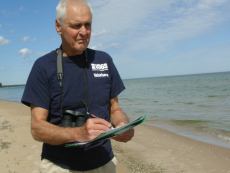 Where did the turtle cross the road? A citizen scientist has the answer, particularly in Massachusetts, where over the last few years citizen scientists have been tracking turtle crossings as part of the Turtle Roadway Mortality Monitoring Program. Volunteers are trained by Linking Landscapes for Massachusetts Wildlife, a partnership between Division of Fisheries and Wildlife (DFW), Department of Transportation (DOT) Highway Division and the University of Massachusetts-Amherst.
Where did the turtle cross the road? A citizen scientist has the answer, particularly in Massachusetts, where over the last few years citizen scientists have been tracking turtle crossings as part of the Turtle Roadway Mortality Monitoring Program. Volunteers are trained by Linking Landscapes for Massachusetts Wildlife, a partnership between Division of Fisheries and Wildlife (DFW), Department of Transportation (DOT) Highway Division and the University of Massachusetts-Amherst.
The training will take place next week.
Get more info on Linking Landscapes for Massachusetts Wildlife, here.
Read the press release in iBerkshires.com
Next week is also when Delaware Department of Natural Resources and Environmental Control wildlife biologist Matthew Bailey will introduce volunteers to monitor the state’s endangered piping plovers and other beach-nesting birds, and protect them from disturbance.
Read more about the training session, here.
There will be lots of training sessions for avian botulism monitors on Lake Michigan, perhaps because avian botulism is no where near as cute as either a piping plover or a turtle and you need to cast a wider net to get people to volunteer. Still, 44 citizen scientists volunteered with the US Geological Survey’s avian botulism monitoring program last year.
Read more about the program, here.
A home-grown citizen science project, the SeaBC Sea Bird Count, which encourages long-distance boaters to observe ocean birds and report them to eBird, took another step recently by creating a poster that can be displayed at marinas or posted on-line.
View or download the poster, here.
Photo: Avian botulism monitoring project volunteer, courtesy of the US Geological Survey

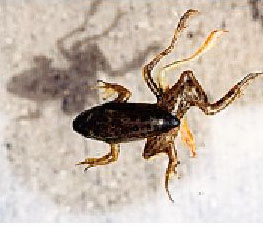 On an August day 17 years ago, eight Minnesota junior high school students on a field trip caught 22 frogs in a farm pond. At least half of the frogs had some abnormality, mostly in their hind legs. The conscientious teacher reported the group’s finding to the state. Dutiful state scientists surveyed wetlands across Minnesota and found at least one hotspot of frog abnormality in every county in the state.
On an August day 17 years ago, eight Minnesota junior high school students on a field trip caught 22 frogs in a farm pond. At least half of the frogs had some abnormality, mostly in their hind legs. The conscientious teacher reported the group’s finding to the state. Dutiful state scientists surveyed wetlands across Minnesota and found at least one hotspot of frog abnormality in every county in the state.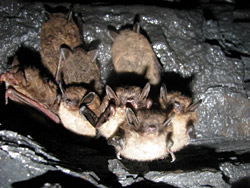 Bats in the barn? A new rule in New Hampshire says that they can’t be removed between May 15 and August 15, when bats are typically raising their young. If a bat has tested positive for rabies, then special permission to exclude the bats will be given.
Bats in the barn? A new rule in New Hampshire says that they can’t be removed between May 15 and August 15, when bats are typically raising their young. If a bat has tested positive for rabies, then special permission to exclude the bats will be given.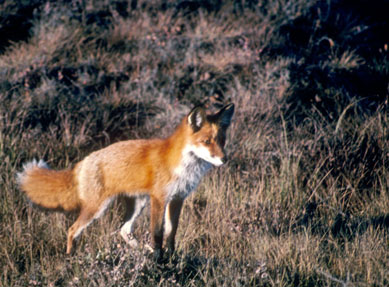
 At first they were, like gray squirrels almost everywhere in the US, abundant to the point of being a nuisance, especially to people with bird feeders. Then they were gone, or almost so. When mange struck the gray squirrels of the San Bernardino Mountains in California, people noticed, particularly in the past year.
At first they were, like gray squirrels almost everywhere in the US, abundant to the point of being a nuisance, especially to people with bird feeders. Then they were gone, or almost so. When mange struck the gray squirrels of the San Bernardino Mountains in California, people noticed, particularly in the past year.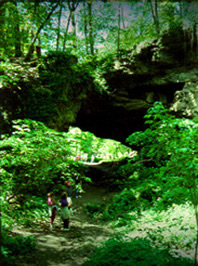 On Wednesday, the Iowa Department of Natural Resources announced that a low level of the fungus that causes white nose syndrome was found on one of the 15 bats swabbed this winter at a tourist cave run by the state. None of the bats seen in the cave appeared to have symptoms of white nose syndrome.
On Wednesday, the Iowa Department of Natural Resources announced that a low level of the fungus that causes white nose syndrome was found on one of the 15 bats swabbed this winter at a tourist cave run by the state. None of the bats seen in the cave appeared to have symptoms of white nose syndrome.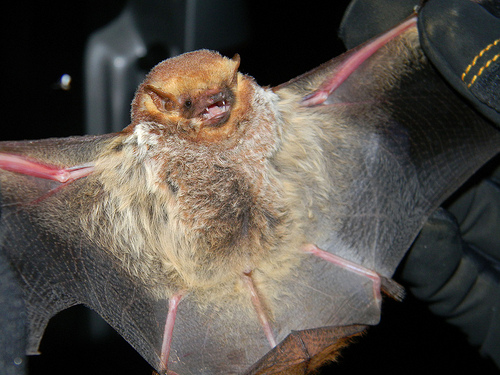
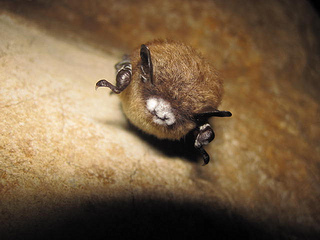 The fifth annual symposium on white nose syndrome in bats is taking place in Madison, Wisconsin this week. The sessions have been closed to the public, so this sneak peek comes to you through yesterday’s media conference call and some research on the internet.
The fifth annual symposium on white nose syndrome in bats is taking place in Madison, Wisconsin this week. The sessions have been closed to the public, so this sneak peek comes to you through yesterday’s media conference call and some research on the internet.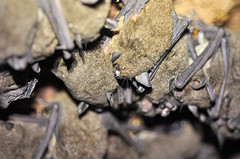 The
The  Where did the turtle cross the road? A citizen scientist has the answer, particularly in Massachusetts, where over the last few years citizen scientists have been tracking turtle crossings as part of the Turtle Roadway Mortality Monitoring Program. Volunteers are trained by Linking Landscapes for Massachusetts Wildlife, a partnership between Division of Fisheries and Wildlife (DFW), Department of Transportation (DOT) Highway Division and the University of Massachusetts-Amherst.
Where did the turtle cross the road? A citizen scientist has the answer, particularly in Massachusetts, where over the last few years citizen scientists have been tracking turtle crossings as part of the Turtle Roadway Mortality Monitoring Program. Volunteers are trained by Linking Landscapes for Massachusetts Wildlife, a partnership between Division of Fisheries and Wildlife (DFW), Department of Transportation (DOT) Highway Division and the University of Massachusetts-Amherst.